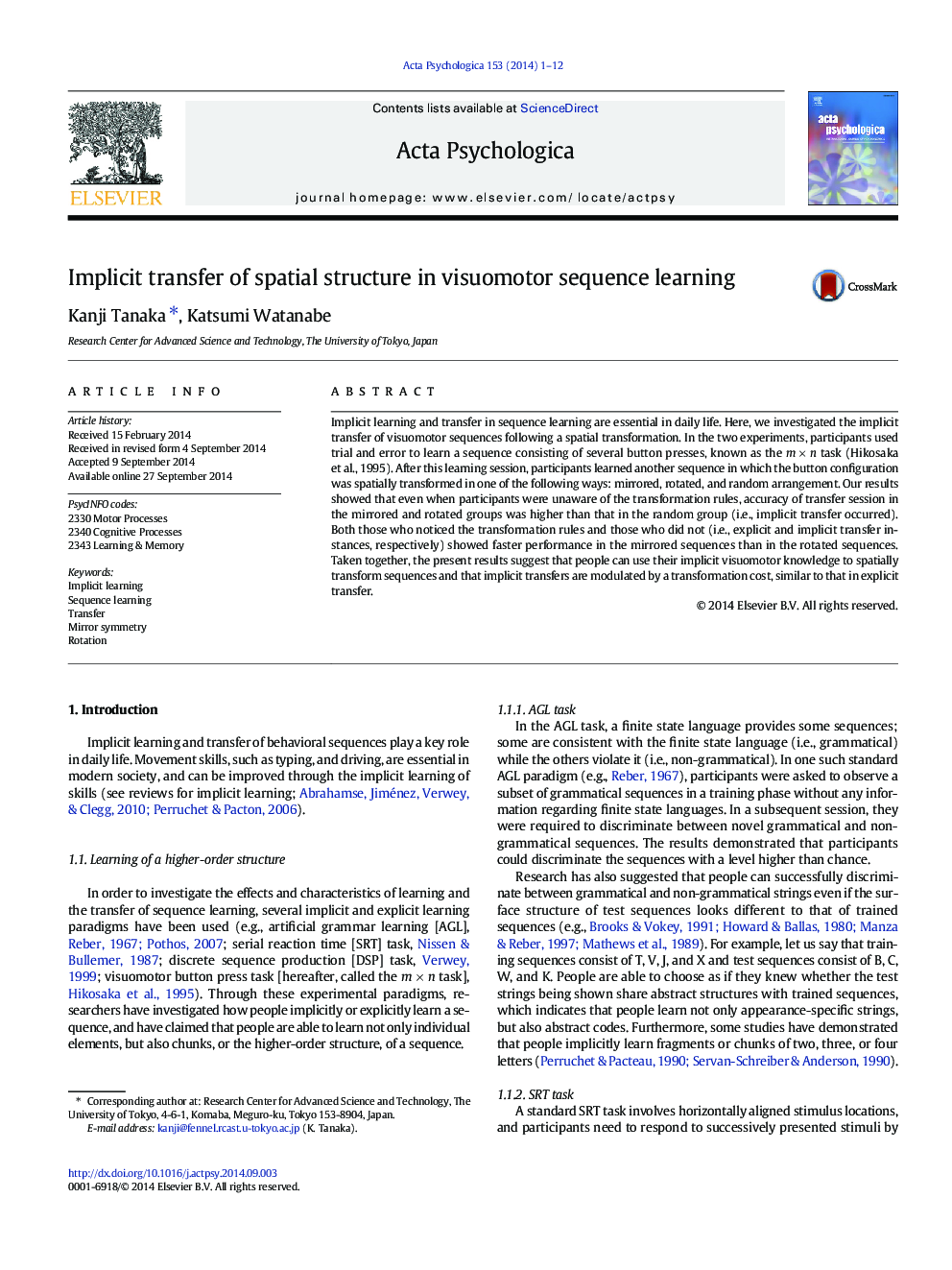| کد مقاله | کد نشریه | سال انتشار | مقاله انگلیسی | نسخه تمام متن |
|---|---|---|---|---|
| 919758 | 1473605 | 2014 | 12 صفحه PDF | دانلود رایگان |
• A consistent spatial transformation of sequences induces implicit transfer.
• Learned representations can be implicitly applied to spatially transformed sequences.
• A transformation cost modulates effects of implicit transfer as in explicit transfer.
Implicit learning and transfer in sequence learning are essential in daily life. Here, we investigated the implicit transfer of visuomotor sequences following a spatial transformation. In the two experiments, participants used trial and error to learn a sequence consisting of several button presses, known as the m × n task (Hikosaka et al., 1995). After this learning session, participants learned another sequence in which the button configuration was spatially transformed in one of the following ways: mirrored, rotated, and random arrangement. Our results showed that even when participants were unaware of the transformation rules, accuracy of transfer session in the mirrored and rotated groups was higher than that in the random group (i.e., implicit transfer occurred). Both those who noticed the transformation rules and those who did not (i.e., explicit and implicit transfer instances, respectively) showed faster performance in the mirrored sequences than in the rotated sequences. Taken together, the present results suggest that people can use their implicit visuomotor knowledge to spatially transform sequences and that implicit transfers are modulated by a transformation cost, similar to that in explicit transfer.
Journal: Acta Psychologica - Volume 153, November 2014, Pages 1–12
